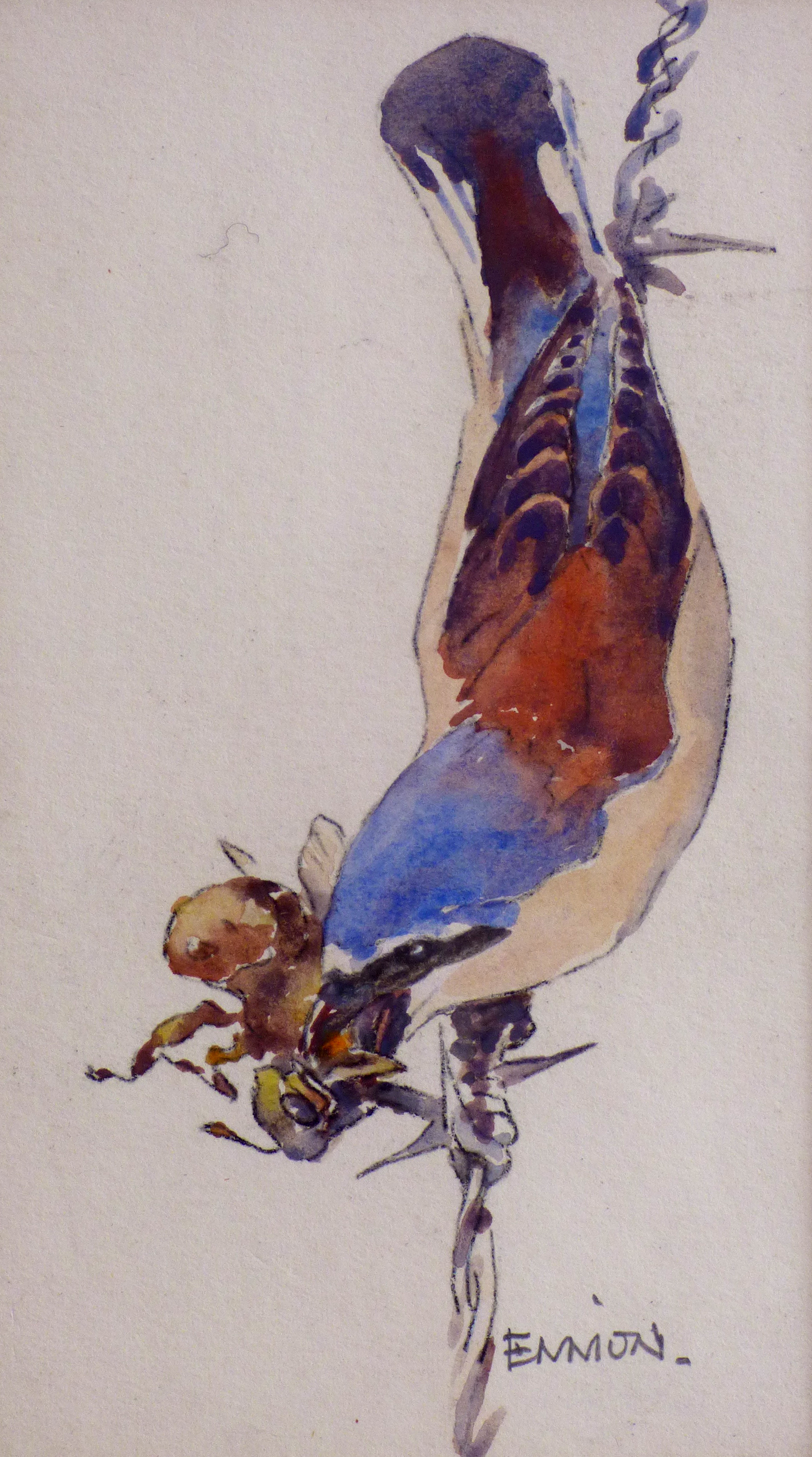
Eric Ennion 1900–1981
SWLA Founder member 1964–1981
Eric Ennion was born on 7th June 1900, the son of a country doctor. In 1904 the family moved to Burwell on the edge of the Cambridgeshire fens where, after studying medicine at Caius College and St Mary’s Hospital, he joined his father’s practice in 1926.
The countryside around Burwell was rich in wildlife and Eric made full use of his freedom to explore. From an early age he was fascinated by birds, and with drawing them. His earliest paintings owe much to the book illustrations he saw, and work by artists such as Thorburn and Southgate. His maternal great uncle was the animal painter J. Bouverie Goddard who exhibited at the Royal Academy towards the end of the 19th century.
As an artist, Eric Ennion was entirely self-taught. The key to his work is the field sketches which he made in the 1930’s and which he kept and treasured for the rest of his life – not just as his ‘stock in trade’ providing source material for his pictures for the next 40 years, but as wonderful works in their own right. Many of these exquisite small sketches were done in Burwell Fen and in the Cambridgeshire countryside nearby, sometimes whilst on his rounds visiting patients. Often the sketches were reworked in the studio and the best ones cut out and pasted down on card. Some of the earliest were redrawn several years later but were still inscribed with the date of the original observation.
Eric’s eyes were acutely observant, catching the individual character of birds, their odd movements and ways of standing. These observations were interpreted in a wholly personal way with a fluent use of watercolour or economically controlled pen line. His field sketches, and rough memory drawings when working out compositions for paintings, were drawn rapidly and with a certainty borne of long practice and deep knowledge of the subject. He had a great understanding of the pictorial possibilities in nature and how to grasp the essential elements for picture-making.
In 1941–42 Burwell Fen was drained and reclaimed for agriculture as part of the war effort. Eric wrote Adventurers Fen, published in 1942, recording its history over the previous forty years. The British Bird followed in 1943 and The Lapwing in 1949, and in all three the illustrations show an economical line and wash technique which signalled the way ahead.
At the end of the war he sold the medical practice and took the opportunity to become the first warden of the pioneer Field Studies Centre at Flatford Mill in Suffolk. Birds were now his abiding interest, and while at Flatford he served on the Councils of the RSPB, the BTO and British Ornithologists’ Union.
After five years at Flatford, he and his wife Dorothy established their own Field Centre and Bird Observatory at Monks’ House, in Northumberland – one of the regular visitors was John Busby who was teaching at Edinburgh College of Art. The story of Ennion’s ten years in Northumberland is beautifully told in his book The House on the Shore, published in 1960.
In 1961 Ennion ‘retired’ to Shalbourne in Wiltshire, running his own private courses on landscape and wildlife painting and continuing to paint, lecture and teach natural history. The move to the Mill House heralded a period of great creativity – at last Eric had more time to paint and he produced many large works including the nine paintings of Brownsea Island which he presented to the National Trust. His son Hugh farmed the watercress beds which stretched up the small valley behind the house — the birds there provided a constant source of inspiration. In 1963 Eric published Birdwatching, a book in the Pelham Practical Books series.
In 1960 Ennion assisted Robert Gillmor in organising an exhibition of Contemporary Bird Painters at Reading Museum and Art Gallery. It was the first of its kind and a great success, subsequently touring the country, and led to the formation, in 1964, of the Society of Wildlife Artists with Eric acting as its first Chairman.
Eric co-authored Tracks (1967) with his friend Niko Tinbergen and they then produced Signals for Survival (1970) with Hugh Falkus. In the following decade, he continued to paint and to run courses on wildlife and landscape painting. He was a natural teacher who inspired both an enthusiasm for the subject and devotion to himself. He taught his pupils to see with a fresh vision: not just his, but how to develop their own. His last course was at the Hawk Conservancy, Weyhill in 1980 attended by his long-time friend John Busby.
Fittingly, after Eric’s death in 1981, John Busby edited The Living Birds of Eric Ennion a retrospective of drawings, paintings and writings (Victor Gollancz 1982). Further books include Wings and Seasons edited by Bob Walthew (Arlequin Press 1994), A Life of Birds edited by Bob Walthew (Wildlife Art Gallery 2003), One Man’s Birds edited by Bob Walthew (Wildlife Art Gallery 2004) and Bird Man’s River (Benton Street Books 2011)
Many thanks to Bob Walthew and Clive Bennett for biographical notes, and Andrew Haslen at the Wildlife Art Gallery for images.